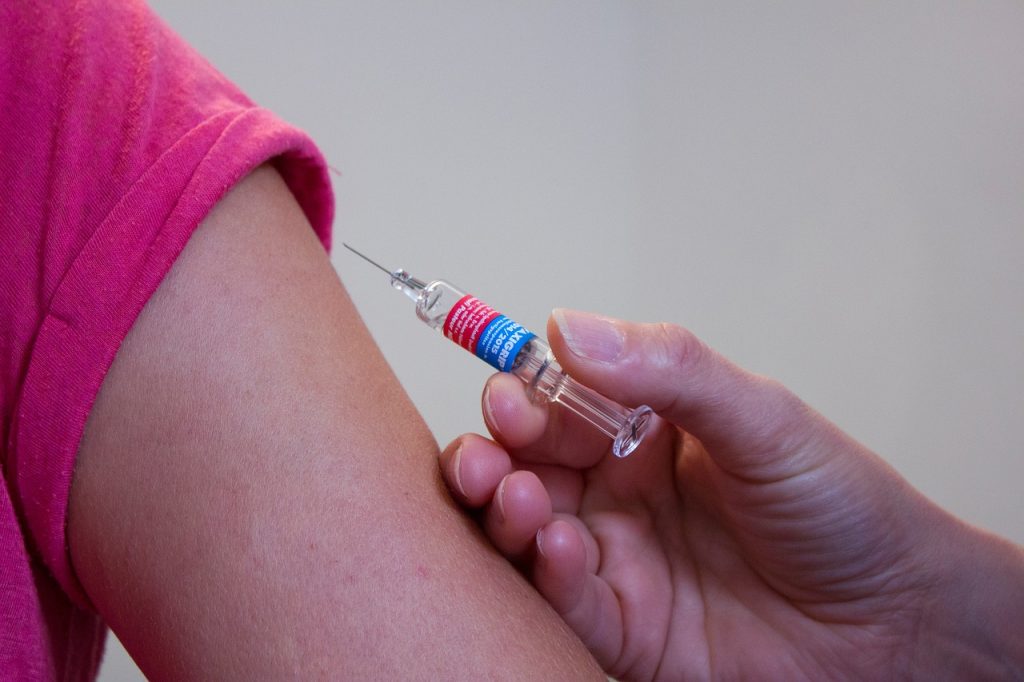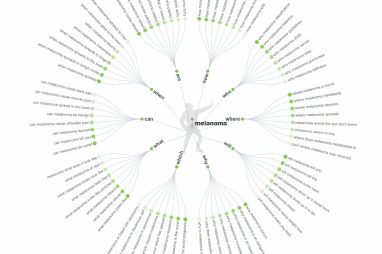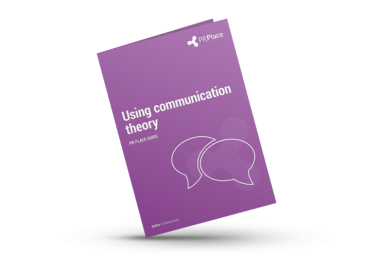Shaping behaviour rather than changing minds
Can behavioural science help us combat vaccine hesitancy?
About the author
Sophie Protheroe prepared this article for a CIPR Professional PR Diploma assignment while studying with PR Academy.


Since Edward Jenner’s historic smallpox vaccine more than 200 years ago, vaccines have been one of the most powerful public health tools available, saving millions of lives every year[i].
During the coronavirus pandemic, we have witnessed first-hand how vaccines have been instrumental in reducing the severity of the disease and helping countries to reopen their economies.
However, a fundamental challenge continues to threaten the success of vaccination campaigns worldwide: the hesitancy of millions to receive a jab.
In 2019, even before the coronavirus pandemic, the World Health Organisation (WHO) named vaccine hesitancy – defined as a delay in acceptance or refusal of vaccination despite availability of vaccination services – as one of the top ten threats to global health[ii].
Communication is key
In order to combat vaccine hesitancy, many traditional healthcare communication campaigns focus on rational arguments and scientific evidence to inform and educate the public. It is undoubtedly essential for concerned authorities to proactively communicate facts about vaccines. However, in this digital world where we are constantly bombarded with news, the sheer volume of information can be overwhelming.
Research in areas such as behavioural economics and cognitive psychology indicates that if a task absorbs too much of our attention, we will quickly revert to the easiest option or the status quo.
In these situations, people frequently base difficult decisions less on rational processes and more on values and heuristics – that is, on cognitive ‘shortcuts[iii].’ This response is an evolutionary adaptation that has aided human survival by allowing us to use default behaviours to preserve our cognitive capacity.
This begs the question: in the age of the “infodemic,” when it comes to vaccine communications, are we better off trying to shape people’s behaviour rather than trying to change their minds?
Psychology of decision making
Human decision making is a complex process that incorporates different routes, including both conscious and subconscious thought processing. This idea is explored in the ‘Elaboration Likelihood Model (ELM)’, a psychological model of persuasion developed by Petty and Cacioppo in 1986[iv]. The model’s name comes from the fact it analyses both how much an individual thinks about arguments in a message (‘elaboration’), as well as how likely this is to happen.
The ELM suggests that there are two routes to attitude formation or change: the central route and the peripheral route. The central route to persuasion implies that the audience has the ability, opportunity and motivation to carefully evaluate a message based on rational arguments. This process requires conscious thought and processing. In contrast, the peripheral route involves less critical examination of the information and suggests that a better response can be achieved through the use of cues and symbols that generate a mood or feeling, such as the deployment of celebrity endorsements, eye-catching visuals or emotional appeal.
If our subconscious thoughts and feelings can have such a major impact on our decision making, then the psychological and social factors that affect how people think and behave should play an integral part in the design of vaccine campaigns.
This idea is gaining traction. In January 2021, the World Bank launched a new programme to support countries to understand and reduce vaccine hesitancy using behavioural science[v]. Earlier this year, the journal Frontiers in Communication launched a new research topic on the causes of vaccine hesitancy during the COVID-19 pandemic and issued a call for papers exploring the role of media and communications in vaccine behaviour[vi].
But is there any evidence that behavioural science approaches have actually led to increased vaccine uptake?
Three lessons from behavioural science
Over the past few years, several studies have published results that suggest that behavioural science can help us to harness our psychology to achieve positive health outcomes. Here, we explore three key behavioural science techniques and examine the evidence for their efficacy in persuading people to get vaccinated.
- Understanding social norms
People tend to surround themselves with like-minded individuals. The vaccine belief of an individual is often aligned with the vaccine belief of the social network to which the person belongs.
Vaccine hesitancy during the coronavirus pandemic was greatest among people from lower socio-economic and/or ethnic minority backgrounds.
For instance, a recent study at the Universities of Birmingham and Leeds showed that vaccine hesitancy during the coronavirus pandemic was greatest among people from lower socio-economic and/or ethnic minority backgrounds[vii]. The data showed that, during the period immediately prior to Britain’s COVID vaccine rollout in December 2020, over 11% of UK adults said they were unwilling to take a COVID vaccine. This was lowest among white people, with 9% saying they didn’t want a COVID vaccine. In comparison, 50% of Black respondents said they didn’t want to receive the vaccine. Hesitancy was also high in other non-white groups, with 28% of South Asian and 17% of other Asian respondents saying they were unwilling to be vaccinated. This hesitancy was at least partly driven by people feeling disenfranchised by the state or not trusting government personnel.
This demonstrates the importance of tailoring messages to different target audiences. Research has shown that health communication is more effective when it is relevant to and shaped to match the characteristics of the specific target group, including the cultural values, norms, traditions and characteristics of the community that is approached[viii].
A recent study by the World Bank in Jordan showed that vaccine messages that addressed an individual’s specific concern were more effective at encouraging someone to get vaccinated[ix]. For example, those who reported concerns about COVID vaccine efficacy were most likely to increase their intent to get vaccinated when shown a message highlighting vaccine efficacy along with a reminder that they would be protecting friends and family. This group’s intent to vaccinate increased by 21% compared to control messages. This study demonstrates the importance of adapting messaging to different social groups.
Other research has shown that making use of personalized normative feedback, where people receive information on how they are performing against others around them, can help to achieve higher vaccination rates. A study in North Macedonia funded by the World Bank showed that appealing to dynamic social norms increased individuals’ intent to be vaccinated by 39%[x]. Messages such as, “More and more of your neighbours are getting vaccinated, 10,000 people in your community received their COVID vaccine in the last week, don’t miss out! Get your vaccine today,” were more successful than general messages that simply said, “Get vaccinated.”
- The role of trusted messengers
Other work has shown that who delivers the message really matters. A study published in February 2021 explored the effectiveness of different public figures at promoting social distancing in countries severely affected by the COVID-19 pandemic at the time[xi]. The researchers surveyed more than 12,000 people in 6 countries — Brazil, Italy, South Korea, Spain, Switzerland and the United States — about their willingness to share a message encouraging social distancing. The message could be endorsed by actor Tom Hanks, celebrity Kim Kardashian, a prominent government official from the survey-taker’s country, or Anthony Fauci, director of the US National Institute of Allergy and Infectious Diseases in Bethesda, Maryland.
The results showed that, across all countries and demographics, respondents were most willing to share the message when it came from Anthony Fauci, followed by a government spokesperson. Celebrity spokespersons were the least effective. These results suggest that scientific experts and governments should not underestimate their power to inform and persuade in times of crisis and highlights the importance of utilizing locally trusted sources to disseminate health-related messages.
- Using behavioural nudges
Another way to shape vaccine behaviour is to make vaccination the easy option by keeping vaccination on people’s minds and reducing barriers to it. This idea, known as “Nudge Theory,” was introduced by the behavioural economists Richard Thaler and Cass Sunstein[xii]. It is based on the idea that by shaping the environment, we can influence the likelihood that one option is chosen over another by individuals. Nudge techniques to combat vaccine hesitancy include providing free transportation to vaccination sites, sending vaccination reminders, and securing mobile vaccination units for hard-to-reach populations[xiii].
Several studies suggest that behavioural nudges can help to increase vaccine uptake. For example, behavioural science researchers at the University of Pennsylvania in Philadelphia have been testing nudges that encourage people to get the influenza vaccine[xiv]. They compared 20 different messaging strategies, ranging from jokes to direct appeals, and found that personal messages, which involved texting people to tell them that a flu vaccine has been reserved especially for them, successfully boosted vaccination rates.
These findings were put into practice in Jersey, as part of an initiative designed to encourage care-home staff to get the COVID-19 vaccine. The study found that giving someone a sense of ownership, for example by telling them, “This vaccine has been reserved for you,” increased the likelihood of someone coming in for a vaccine[xv]. The programme achieved 93% vaccine coverage of care home staff in Jersey, compared with around 80% in other jurisdictions.
Taking a behaviourally savvy approach
Given the wide range of psychological and social factors that influence how people think and behave, it is clear that vaccine hesitancy cannot be solved with a generalized blanket solution or a “one size fits all” communication campaign.
The wealth of research conducted during the coronavirus pandemic has provided new evidence that leveraging behavioural routes to persuasion can help to increase vaccine uptake and ultimately improve public health.
Public health practitioners should combine behavioural science approaches with existing information-based strategies to tap into both conscious and subconscious decision-making processes. Only by making use of all the tools available to us will we be able to tackle the pressing global challenge of vaccine hesitancy.
References
[i] World Health Organisation. 2013. Vaccine Safety Events: Managing the Communications Response. [online] Available at: https://www.euro.who.int/__data/assets/pdf_file/0007/187171/Vaccine-Safety-Events-managing-the-communications-response.pdf
[ii] World Health Organisation. 2019. Ten Threats to Global Health in 2019. [online] Available at: https://www.who.int/news-room/spotlight/ten-threats-to-global-health-in-2019
[iii] The Sabin-Aspen Vaccine Science and Policy Group. 2020. Meeting the Challenge of Vaccine Hesitancy. [online] Available at: https://www.sabin.org/app/uploads/2022/04/Sabin-Aspen-report-2020_Meeting-the-Challenge-of-Vaccine-Hesitancy.pdf
[iv] Petty, R. & Cacioppo, J. 1986. The Elaboration Likelihood Model of Persuasion. Advances in Experimental Social Psychology. 19. 123-205. 10.1016/S0065-2601(08)60214-2.
[v] World Bank. 2022. Vaccine Hesitancy: 10 Lessons from Chatbotting about COVID-19 in 17 Countries. [online] Available at: https://blogs.worldbank.org/health/vaccine-hesitancy-10-lessons-chatbotting-about-covid-19-17-countries
[vi] Frontiers in Communication. 2022. The Role of Media and Communications in Vaccine Hesitancy during the COVID-19 Pandemic. [online] Available at: https://www.frontiersin.org/research-topics/30773/the-role-of-media-and-communications-in-vaccine-hesitancy-during-the-covid-19-pandemic
[vii] University of Birmingham. 2022. Lack of Trust in Public Figures Linked to COVID Vaccine Hesitancy says New Research. [online] Available at: https://www.birmingham.ac.uk/news/2022/lack-of-trust-in-public-figures-linked-to-covid-vaccine-hesitancy-says-new-research-1
[viii] World Health Organisation. 2017. Vaccines and Trust. [online] Available at: https://www.who.int/publications/i/item/vaccination-and-trust
[ix] Kovacevic, R., Cameron, C. & Vakis, R. 2022. Being Behaviorally Savvy in Vaccine Communication. World Bank Blog. [online] Available at: https://blogs.worldbank.org/health/being-behaviorally-savvy-vaccine-communication
[x] Kovacevic, R., Cameron, C. & Vakis, R. 2022. Being Behaviorally Savvy in Vaccine Communication. World Bank Blog. [online] Available at: https://blogs.worldbank.org/health/being-behaviorally-savvy-vaccine-communication
[xi] Abu-Akel, A., Spitz, A., & West, R. 2021. The Effect of Spokesperson Attribution on Public Health Message Sharing During the COVID-19 Pandemic. PloS one, 16(2). Available at: https://pubmed.ncbi.nlm.nih.gov/33534800/
[xii] Thaler, R., & Sunstein, C. 2008. Nudge: Improving Decisions about Health, Wealth, and Happiness. Yale University Press.
[xiii] Brewer, N. et al. 2018. Increasing Vaccination: Putting Psychological Science into Action. Psychological Science in the Public Interest. 18(3), 149–207. Available at: https://journals.sagepub.com/stoken/default+domain/10.1177/1529100618760521-free/full
[xiv] Aschwanden, C. 2021. How COVID is Changing the Study of Human Behaviour. Nature. [online] Available at: https://www.nature.com/articles/d41586-021-01317-z
[xv] Martin, S. & Sherrington, B. 2021. How One British Isle Persuaded Its Citizens to Get Vaccinated. Harvard Business Review. [online] Available at: https://hbr.org/2021/06/how-one-british-isle-persuaded-its-citizens-to-get-vaccinated?registration=success


